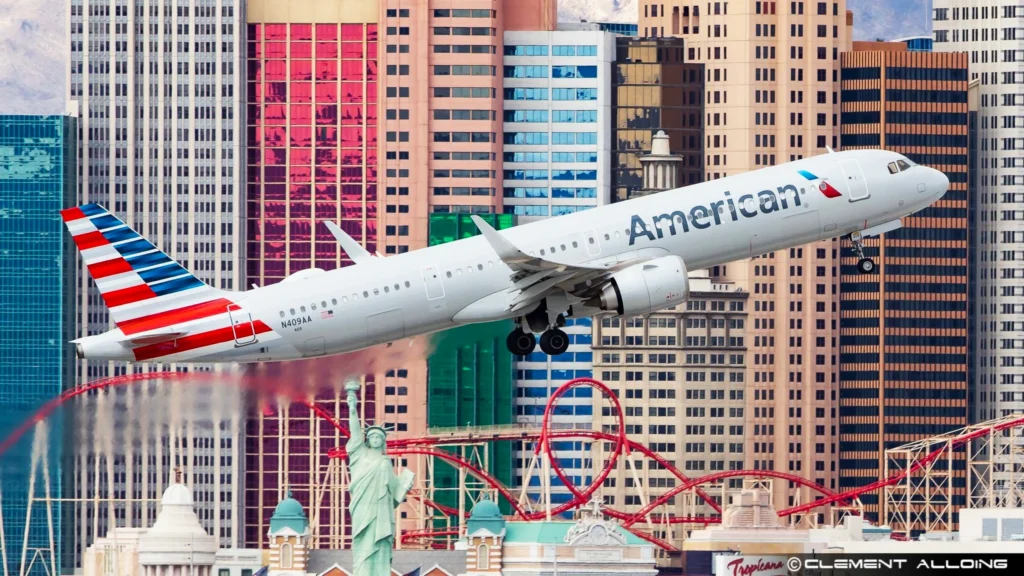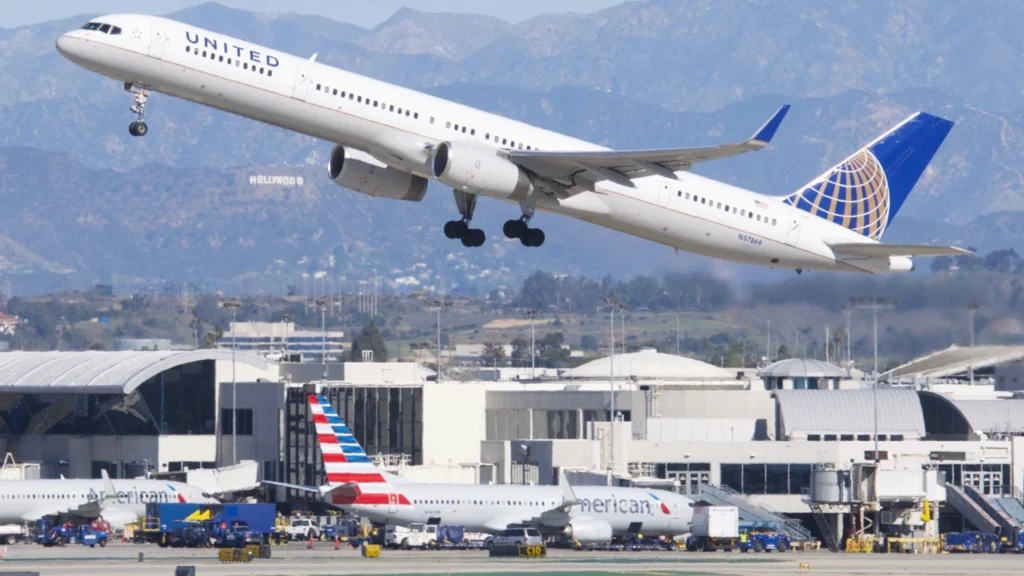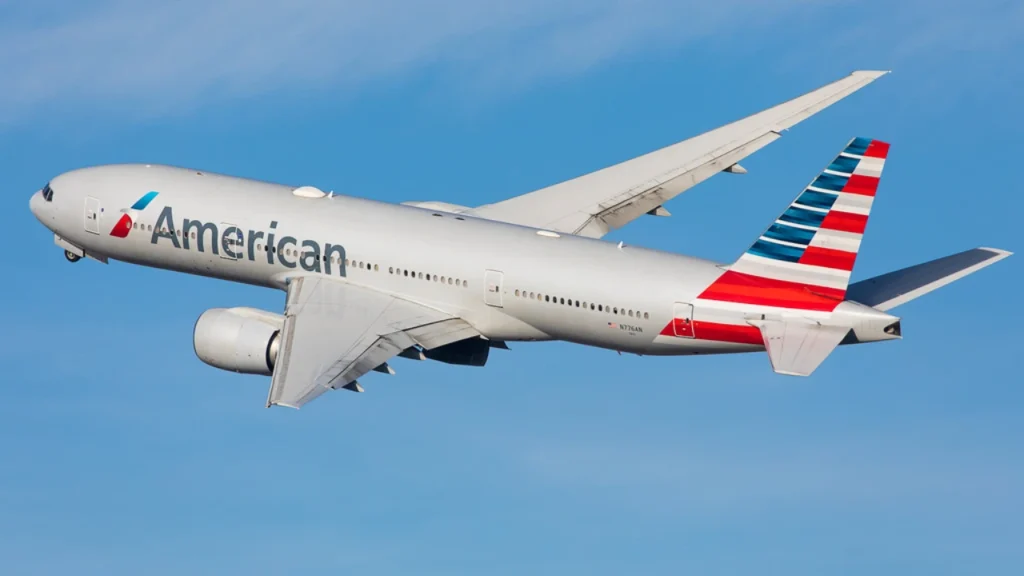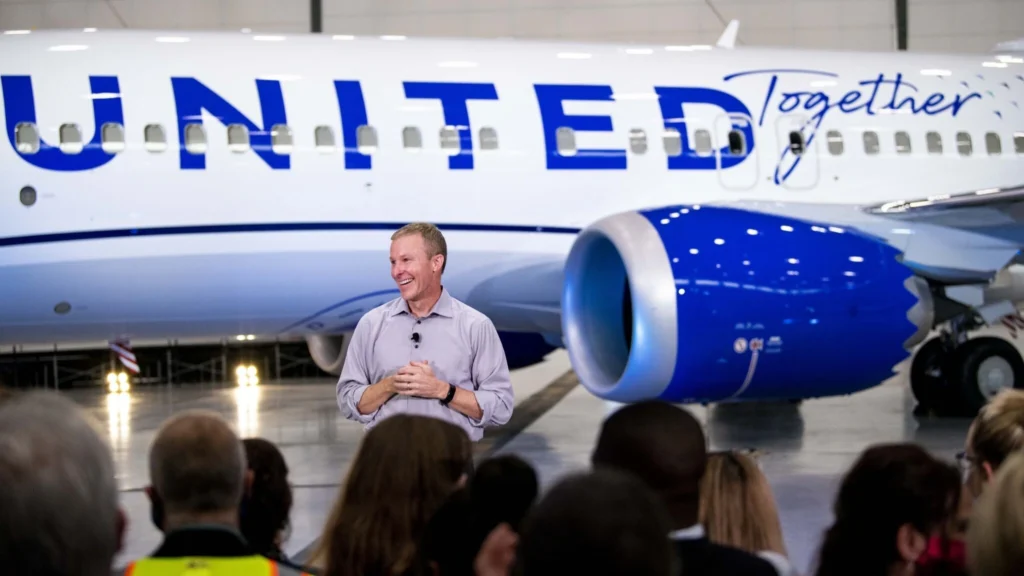
NEW YORK- American Airlines (AA) and United Airlines (UA) are intensifying efforts to gain ground at John F. Kennedy International Airport (JFK), a key battleground in one of the world’s most competitive air travel markets.
Despite facing infrastructure constraints, regulatory hurdles, and shifting alliances, both carriers are exploring aggressive strategic moves to expand their presence and influence at JFK (JFK), aiming to rival Delta Air Lines (DL), the market leader.
 Photo: Clément Alloing
Photo: Clément AlloingAmerican Airlines at New York JFK
When US Airways merged with American Airlines in 2013, the combined entity struggled to define its role in New York (JFK), a market dominated by Delta Air Lines and, to a lesser extent, JetBlue (B6).
Initially, American Airlines aimed to serve as a conduit for passengers traveling to New York (JFK) from smaller cities, scheduling flights for same-day or business-day travel.
This approach failed to generate profits, leading to a scaled-back operation by 2018, focusing on key hubs, Los Angeles (LAX), and London Heathrow (LHR) via its joint venture with British Airways (BA).
American described this as a “boutique operation,” but it lacked the scale to compete for corporate contracts or local loyalty, especially in New York’s lucrative credit card market.
American’s slot management was equally problematic. The airline lost several slots at New York (JFK) due to underutilization, with some slots inadvertently forgotten during the merger.
During runway construction in New York, American relied on slot waivers to reduce flying without penalties, further shrinking its footprint.
The boutique strategy alienated New York (JFK) customers, as American couldn’t match the network depth of Delta or the local appeal of JetBlue.
In 2020, American partnered with JetBlue through the Northeast Alliance (NEA), combining their operations to become the third-largest player in New York and Boston (BOS).
The NEA aimed to challenge Delta’s dominance by coordinating schedules and sharing revenues. However, the U.S. Department of Justice (DOJ) blocked the alliance in 2023, citing antitrust concerns. The partnership’s collapse left American undersized at New York, prompting a lawsuit against JetBlue to recover funds owed from the NEA’s unwinding.
 Photo: Aero Icarus | Flickr
Photo: Aero Icarus | FlickrUnited Airlines’ Ambition to Return to JFK
United Airlines (UA), absent from New York (JFK) since 2015, is determined to re-establish a presence to compete with Delta and American.
Chicago-based carrier previously attempted a return in 2020 with four slots, operating limited flights on Boeing 767-300s before downsizing to 757-200s and suspending service.
The minimal operation couldn’t rival Delta’s robust New York (JFK) network or United’s own dominance at Newark Liberty International Airport (EWR).
Recent reports indicate United is negotiating a partnership with JetBlue, potentially involving frequent flyer reciprocity, codesharing, and access to JetBlue’s slots and gates at New York (JFK).
United’s CEO, Scott Kirby, has praised JetBlue’s customer-centric model, citing its free Wi-Fi, live TV, and economy-class experience as aligning with United’s brand.
Kirby views JetBlue as a strategic pathway to re-enter New York (JFK), leveraging JetBlue’s (B6) infrastructure to offer transcontinental and hub-to-hub flights.
However, JetBlue (B6) faces a dilemma. Its core transcontinental routes, such as New York (JFK) to Los Angeles (LAX) and San Francisco (SFO), are highly competitive.
Ceding slots or market share to United (UA) could weaken its position unless the partnership includes significant benefits, such as Star Alliance membership or an acquisition.
United’s financial strength—reporting a 64% profit increase in Q4 2024—positions it to pursue an acquisition, though regulatory scrutiny remains a hurdle.
 Photo: Clément Alloing
Photo: Clément AlloingAmerican Airlines’ Path Forward
Optimizing Operations and Branding
American Airlines must address its slot-constrained reality at New York (JFK). The airline has added over 20 new routes from New York (JFK) and LaGuardia (LGA) since the NEA’s end, utilizing returned slots to bolster its network, Viewfromthewing flagged.
To maximize efficiency, American should shift peak-hour slots from low-yield regional routes to high-demand, high-yield markets like Chicago (ORD), Miami (MIA), and Dallas (DFW). Co-locating oneworld partners, such as British Airways (BA), at Terminal 8 enhances connectivity and customer experience.
American can differentiate itself through targeted marketing. Positioning as the “second-largest global carrier” in New York (despite Newark’s (EWR) prominence) and emphasizing frequent upgrades (compared to Delta’s (DL) 13% elite upgrade rate) could attract corporate travelers.
American’s AAdvantage program, praised for its value by independent studies, offers a competitive edge over Delta’s (DL) SkyMiles. Promoting this through New York-specific campaigns, such as 100,000-mile credit card offers, could boost loyalty.
Product Enhancements
American (AA) should invest in New York (JFK)-centric product improvements. Its Flagship First Class and upcoming A321XLR business class suites with doors surpass Delta’s (DL) outdated 767 business class on premium transcontinental routes.
Small, local touches—offering Dr. Brown’s soda, egg creams, or pre-order meals from iconic New York brands like Katz Deli—could resonate with customers. Expanding buy-on-board options, such as bagels and pastrami sandwiches, would enhance the onboard experience.
Slot Acquisition and Potential JetBlue Acquisition
Acquiring additional slots at New York (JFK) is critical but challenging due to slot controls. American (AA) should aggressively negotiate with foreign carriers and partners to secure slots opportunistically.
A bolder move would be to acquire JetBlue (B6) before United (UA) finalizes a deal. With JetBlue’s (B6) market capitalization at $1.7 billion, American (AA) could potentially afford the acquisition, which would face less antitrust scrutiny than a United-JetBlue (B6) merger, given American’s (AA) smaller New York (JFK) presence.
The Trump administration’s prior approval of the NEA suggests a more favorable regulatory environment.
 Photo: Scott Kirby LinkedIn Page
Photo: Scott Kirby LinkedIn PageUnited Airlines’ Strategic Considerations
Partnership Benefits and Risks
A United-JetBlue partnership could grant United access to 20 daily slot pairs and two gates at New York (JFK), enabling a meaningful presence without building from scratch.
Codesharing and frequent flyer integration would enhance connectivity, particularly for Star Alliance carriers at New York (JFK) and Boston (BOS). However, JetBlue’s pilots, represented by the Air Line Pilots Association, oppose the deal, citing potential job losses and contractual violations.
The partnership’s success hinges on balancing benefits for both carriers without eroding JetBlue’s core routes.
Long-Term Acquisition Goals
United’s interest in JetBlue (B6) likely extends beyond a partnership. An acquisition would secure a permanent foothold at New York (JFK) and strengthen United’s (UA) position in Boston (BOS) and Florida markets like Fort Lauderdale (FLL).
However, the DOJ’s scrutiny of market concentration, especially given United’s (UA) dominance at Newark (EWR), poses a significant barrier.
United may pursue a phased approach, starting with a codeshare agreement similar to American’s (AA) partnership with Alaska Airlines (AS), before pushing for a merger.
Stay tuned with us. Further, follow us on social media for the latest updates.
Join us on Telegram Group for the Latest Aviation Updates. Subsequently, follow us on Google News
American Airlines CEO Hits Back at United Scott Kirby’s Criticism
The post How American Airlines and United Are Trying to Win at New York JFK? appeared first on Aviation A2Z.

















